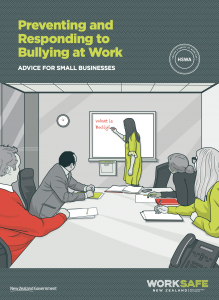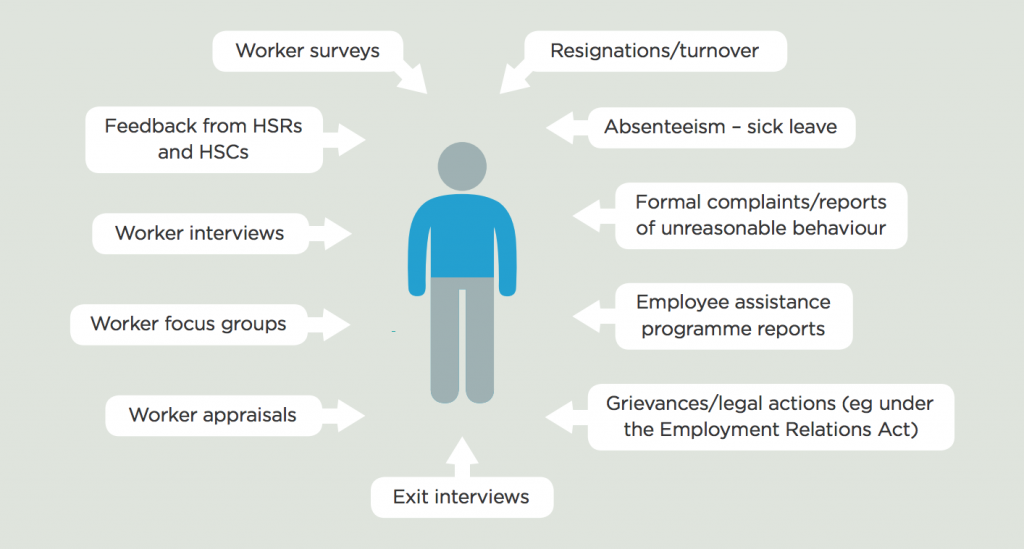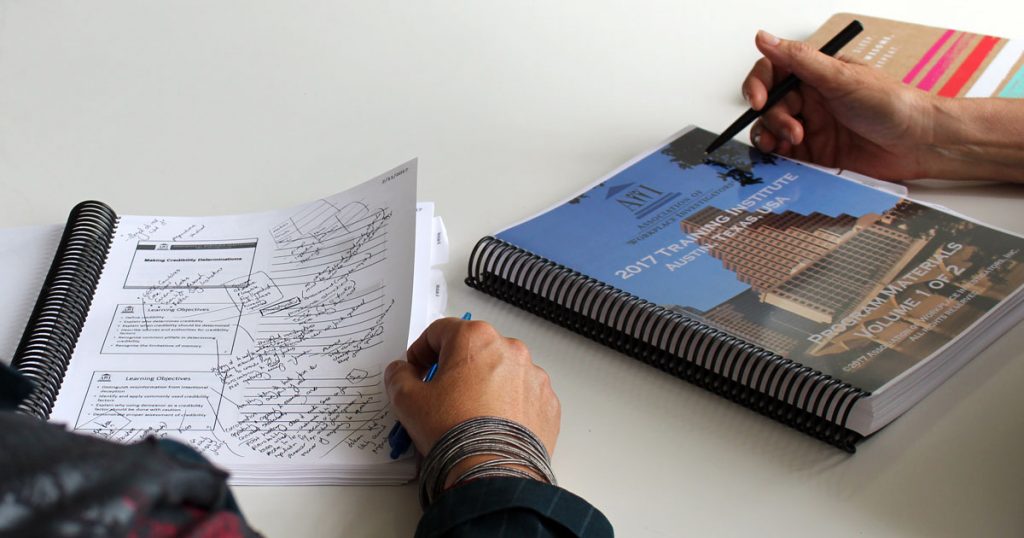Labour Market trends highlight that workplace bullying is on the rise - we've certainly seen this reflected in our increasing investigations workload over the last 1-2 years.
“Bullying harms workers and is a significant issue in New Zealand work places. It can affect people both physically and mentally, can disrupt workplaces, and lower work performance.” - WorkSafe NZ
In our line of work, we often see leaders fear workplace conflict and avoid dealing with it in the right way. Our advice to leaders is to embrace the challenge and hit it head on. Leadership is a full contact sport - conflict is part of your job!
Here's some advice from Intepeople HR Partners Marianne and Melisa on addressing and dealing with workplace conflict (including workplace bullying) in a healthy and productive way.
What Causes Workplace Conflict?
Almost anything can create workplace conflict, but most is born out of poor communication, or an inability to control one's emotions. Leading causes tend to include:
- Power struggles
- Ego, pride, jealousy
- Different personalities
- Needing to be in control
- Misunderstanding
- Workplace Bullying (can result from any of these)
How To Identify Workplace Bullying?
WorkSafe define workplace bullying as:
Workplace bullying is repeated and unreasonable behaviour directed towards a worker or a group of workers that can lead to physical or psychological harm.
- Repeated behaviour is persistent (occurs more than once) and can involve a range of actions over time.
- Unreasonable behaviour means actions that a reasonable person in the same circumstances would see as unreasonable. It includes victimising, humiliating, intimidating or threatening a person.
- Bullying may also include harassment, discrimination or violence.

Workplace bullying is not:
- One-off or occasional instances of forgetfulness, rudeness or tactlessness
- Setting high performance standards
- Constructive feedback and legitimate advice or peer review
- A manager requiring reasonable verbal or written work instructions to be carried out
- Warning or disciplining workers in line with the business or undertaking’s code of conduct
- A single incident of unreasonable behaviour
- Reasonable management actions delivered in a reasonable way
- Differences in opinion or personality clashes that do not escalate into bullying, harassment or violence.
WorkSafe have an online guide for small businesses in regards to preventing and responding to bullying at work. We recommend you download a copy of the guide here and familiarise yourself with it - before you have a problem!
It is important to recognise that bullying can occur not only from a manager or team leader to a lower level employee, but also from one worker to another, or between staff and clients, suppliers or visitors.
How might you find out it's happening?

Image: From WorkSafe's Preventing and Responding to Bullying at Work Guide
What are my obligations as an employer?
A guiding principle of the Health and Safety at Work Act 2015 is that workers and others need to be given the highest level of protection from workplace health and safety risks, as is reasonable.
Employers are responsible for:
- Building good relationships in a respectful work environment
- Educating workers (including managers and H&S reps) about bullying
- Having an anti-bullying policy and procedure that is visible and easy to understand - and making sure employees know what to do if they experience bad behaviour
- Developing good managers
- Providing support to workers who experience unreasonable behaviour
Workplace Conflict Case Examples
- In 2013 an employee of Bay of Plenty District Health Board brought complaints of bullying to the attention of management. The DHB failed to properly investigate his complaint. The employee was found to have been constructively dismissed and was awarded three month's wages and $7500 compensation.
- In 2003 the Employment Court upheld a claim of constructive dismissal of an employee who was bullied. The employer failed to demonstrate its genuine support for the employee in the face of repeated abuse, and the Court held that the employer had breached its duty to the employee to take all reasonable and practical steps to provide him with safe working conditions.
- In this 2012 case, the ERA stated that the definition of workplace bullying might be personal or supervisory/managerial harassment, which is characterised by repeated and persistent offensive, abusive, intimidating, malicious, or insulting behaviour such that the recipient suffers detrimental effects to their feeling of safety, wellbeing and general enjoyment of the work environment.
- In 2017 the ERA ruled a Kindergarten teacher would have her wages reimbursed, i.e. what she would have earned since her unjustified dismissal in October 2015. She would also receive $15,000 compensation for her humiliation suffered during the ongoing investigation.
- The Auckland Council is paying $300,000 in confidential settlements to two whistle-blowers who exposed alleged bullying by a high-ranking officer. One of the whistle-blowers, who suffered mental stress, was on leave from July 27 on full pay until January the next year. The second whistle-blower was paid $175,000 in April and resigned "to pursue the next stage of his career in the private sector".
- The Court concluded a school principal had been unjustifiably dismissed as the Board should have given the process fair opportunity to work. He was awarded $16,500 in compensation.
Resolving Workplace Conflict
From our experience, resolution can generally occur when there is a desire to do so.
Leadership, self-mediation, facilitation, counselling, agreed behaviour plans and/or independent investigations are possible solutions.
What to do in the case of an allegation of workplace bullying?
Remember – it’s usually up to the person alleging bullying to decide the process that they want to use. As a leader, it is important that you:
- Take it seriously, don’t pre-judge the outcome
- Refer the person to your policy if you have one, or you could refer them to the WorkSafe Bullying Prevention Toolbox
- Follow the policy
- Keep it confidential
- Provide support to both parties
- Seek advice, either internal or external

Formal or informal?
Informal
- Someone speaks to the person concerned e.g. reminding them about company values or code of conduct; or
- The complainant or a third party speak to the alleged bully; or
- Mediation between the parties, often results in an agreement about future behaviours
Note that an informal resolution process is more likely to result in working relationships improving.
Formal
- An investigator is appointed – should be independent
- Formal interviews are held and notes recorded
- Witnesses identified and also interviewed
- Report prepared for decision maker with the findings, it may also include recommendations
A formal investigation process is often disruptive to the workplace, and can result in someone leaving.
How does a workplace investigation process work?
Complaints of bullying, harassment, sexual harassment and discrimination can be investigated.
An investigator can also do a 'fact-finding' investigation, e.g. what happened on a certain day, who was where, when, etc.
Other types of investigators include private investigators, forensic accountants and forensic IT people - we sometimes work jointly with them.
Steps for the Employer
- Receive and acknowledge complaint
- Ensure safety of complainant
- Seek advice
- Identify and engage independent investigator
- Consider whether to create terms of reference for investigation
- Advise respondent of complaint/investigation and ensure their safety
- Wait for the investigation process to take place
- Receive and action investigation report
Steps for the Investigator
- Comply with terms of reference, if there is one
- Interview complainant and respondent
- Interview witnesses (if any)
- Examine other evidence (if any)
- Verify witness statements
- Make credibility determinations if necessary
- Prepare draft report and send to complainant and respondent
- Consider any feedback, amend report if necessary
- Issue final report
What to take away from all this?
When made aware of unreasonable behaviour occurring then take it seriously, but don’t prejudge the outcome. Think carefully about how to manage the situation and whether it requires a formal (investigation) or less formal approach.
Either way, follow a sound and fair process - and seek our advice if needed!
Marianne and Melisa are among a small number of Association of Workplace Investigators (AWI) Certificate Holders in NZ. The AWI’s intensive training progamme and robust set of guiding principles for workplace investigations are recognised worldwide.
Disclaimer: This article is general in nature and not intended as a substitute for specific professional advice for your unique situation.
_______________
Follow Intepeople on Facebook & LinkedIn for our latest news and advice.